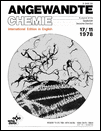Graphical Abstract
Abstract
Polyethylene fibrids are small fibers having lengths of up to some millimeters, which are highly oriented and which have a morphology similar to that of cellulose fibers. The preparation of polyethylene fibrids is based on shear-induced crystallization, a process in which the polyethylene crystallizes from solution under the influence of an elongated flow in the form of so-called shish-kebabs. Polymerization under shear conditions and the flash spinning of polyethylene solutions are the main processes for the preparation of PE fibrids. They may be hydrophilized by an additional process step.—Because of their cellulose-like morphology, (hydrophilized) polyethylene fibrids have interesting properties, e.g. high adsorption capacity and the ability to form hydrogen bonds. In addition, the possibility of undertaking chemical reactions on the surface of the fibrids should be mentioned.





